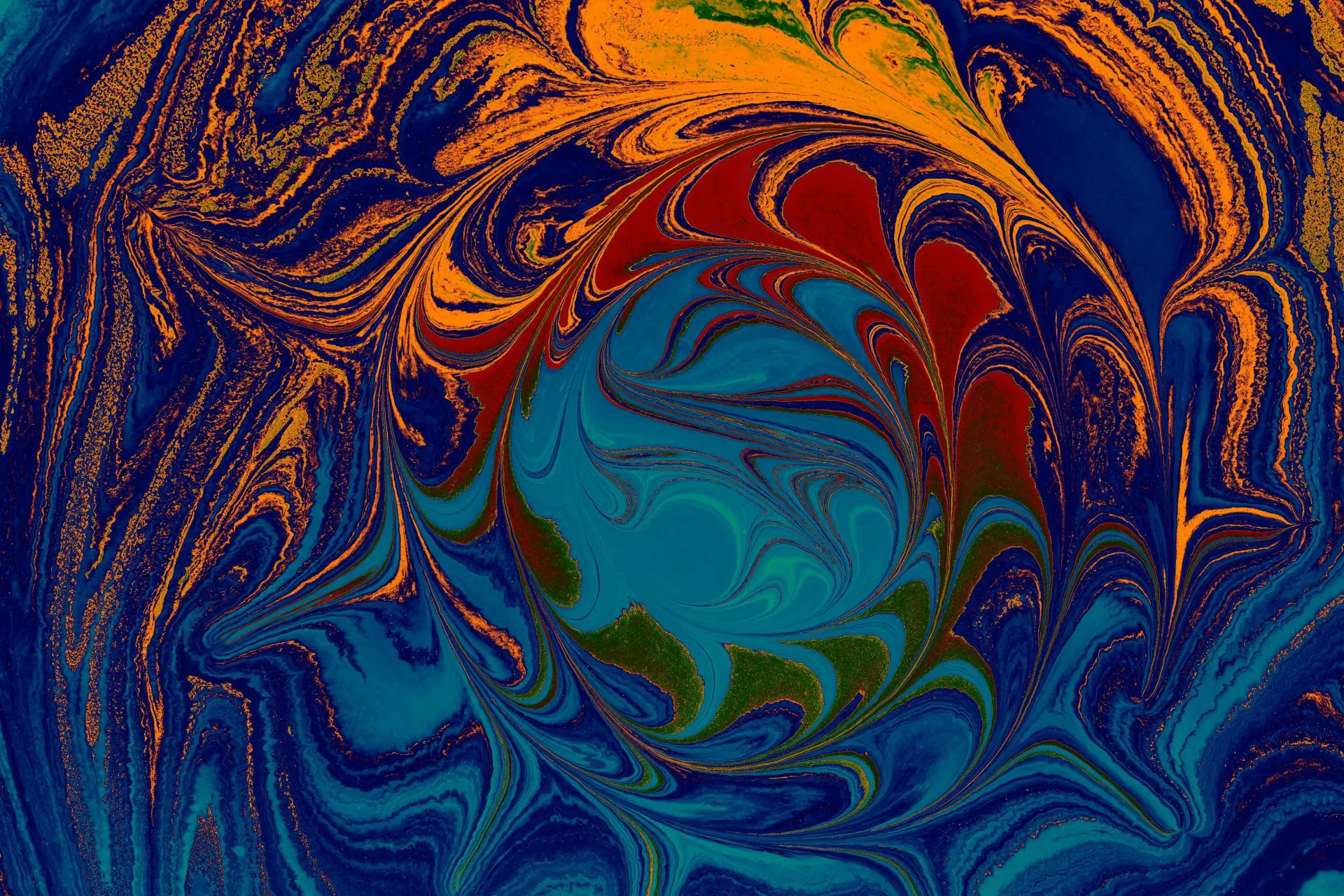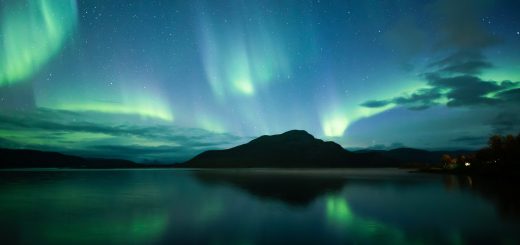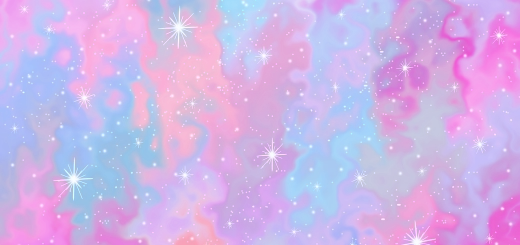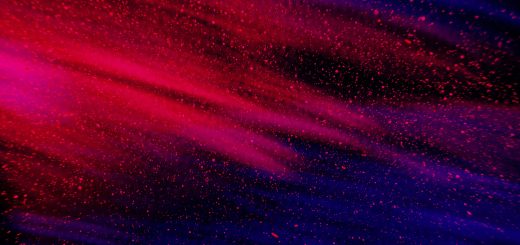Easter Island: The Enigma of the Moai Statues

Looking for more amazing products? Check out our online store and explore our collection here! Happy shopping!
Before diving in, please note: This post is for informational purposes only. If you’d like to know more about how we approach topics, feel free to check out our friendly Disclaimer Page.
Hey there, amazing readers! 
We’re committed to delivering quality posts, and your support (even just sticking around despite the ads) means everything to us. So, bear with us, and thanks for helping us keep the good vibes rolling. Now, on to the fun stuff!
TRANSLATE BUTTON AT THE END OF THE ARTICLE
A Quick Overview
Easter Island, or Rapa Nui as the locals call it, floats serenely in the South Pacific.
This remote location is famous for its monumental Moai statues.
They inspire awe and intrigue, drawing travelers, archaeologists, and history buffs alike.
But what’s the story behind these towering figures?
What do they represent, and how did the Rapa Nui people create and transport them?
This article dives deep into the enigma of the Moai statues and the culture that birthed them.
Discovering Easter Island: A Jewel of the Pacific Ocean
Easter Island sits about 2,300 miles off the coast of Chile, making it one of the most isolated inhabited islands on Earth.
Despite this remoteness, it boasts a rich history and stunning natural beauty.
The island covers just 63 square miles, but it’s packed with fascinating landscapes, including volcanic craters, lush green hills, and dramatic coastlines.
The island was first settled by Polynesians around 1200 AD.
They arrived on double-hulled canoes, bringing with them their traditions, language, and agricultural practices.
Can you imagine the thrill of landing on a lush, uninhabited island with endless possibilities?
The Rapa Nui people cultivated crops, built homes, and established a unique culture that thrived in isolation.
One of the most exciting aspects of Easter Island is its volcanic origin.
The island is made up of three volcanic craters: Rano Kau, Rano Raraku, and Maunga Terevaka.
Each crater tells a story of geological activity and natural beauty.
Rano Raraku is particularly significant, as it’s the primary quarry for the Moai statues.
The discovery of Easter Island isn’t just about its physical attributes; it’s also about the stories that have unfolded over centuries.
European explorers stumbled upon the island in the 18th century, with Dutch explorer Jacob Roggeveen being among the first to document it in 1722.
His arrival led to increased interest, but also exploitation and challenges for the Rapa Nui people.
Today, the island is a UNESCO World Heritage Site, drawing visitors from all over the globe.
It’s a place where ancient history meets modern curiosity.
The preservation of its unique culture and environment is essential for future generations to experience the mystique that envelops Easter Island.
The Mysterious Moai Statues: Icons of Rapa Nui Culture
The Moai statues are perhaps the most iconic symbols of Easter Island.
There are nearly 900 of these statues scattered across the island, each varying in size and style.
Most of them face inland, which many believe signifies a connection to the ancestors and the communities they protect.
These stone figures are crafted primarily from volcanic tuff, which is relatively soft and easy to carve.
The Moai range from small figures to towering giants, with the largest standing at an impressive 33 feet and weighing over 80 tons!
Can you picture that?
These colossal statues were once adorned with red hats made from a different volcanic rock, known as "pukao," adding to their grandeur.
The purpose of the Moai has sparked countless debates among historians and archaeologists.
Some argue they represent deified ancestors, while others believe they were created as a way to channel spiritual energy.
Whatever the case may be, they serve as a testament to the ingenuity of the Rapa Nui people and their deep connection to their heritage.
Interestingly, the Moai statues are not just lifeless figures.
They are believed to embody the spirits of ancestors.
In Rapa Nui culture, the ancestors hold immense significance.
By erecting these statues, the Rapa Nui people sought to honor and engage with their forebears.
This connection is woven into the very fabric of their beliefs.
As you stroll through the various sites on the island, you can’t help but feel a sense of wonder.
Each statue tells a story, and the landscape around them enhances their mystique.
Standing before a Moai, it’s easy to get lost in the history that surrounds you.
What Are the Moai? Understanding Their Significance
The Moai statues serve multiple functions in Rapa Nui culture.
They are more than just impressive feats of engineering; they carry deep spiritual and social significance.
The Rapa Nui believed that these statues captured the essence of their ancestors.
Thus, the Moai acted as intermediaries between the living and the dead.
Aside from honoring ancestors, the Moai also symbolized power.
The more statues a community had, the wealthier and more influential they appeared.
You can imagine the competition among clans to erect the most impressive Moai!
This competition led to a cultural renaissance, with communities investing heavily in their construction.
The location of the Moai was also essential.
Most of them are positioned on Ahu platforms, which are ceremonial altars.
These Ahu not only served as burial sites for important individuals but also as places for rituals and gatherings.
The Moai, therefore, held a central role in the community’s spiritual and political life.
Moreover, the Moai represent the connection to the land.
The Rapa Nui people viewed themselves as caretakers of their environment, and the statues reflected this relationship.
Each Moai is intricately tied to the specific location it occupies, reinforcing the idea that the land and its ancestors are intertwined.
Understanding the Moai deepens our appreciation for the Rapa Nui culture.
These statues remind us of the complexities of human beliefs and the lengths people will go to honor their heritage.
It’s a powerful glimpse into a world where spirituality and community were paramount.
The Art of Moai Construction: Techniques and Tools Used
Creating the Moai was no small feat.
The Rapa Nui people utilized simple stone tools to carve these monumental figures.
They primarily used basalt chisels to shape the volcanic tuff, demonstrating impressive craftsmanship and artistry.
The quarry at Rano Raraku is the birthplace of many Moai.
Here, artisans would carve the statues directly from the volcanic rock.
The process involved rough shaping the figure before it was transported to its final location.
The intricacies in the details, like facial features and headdresses, illustrate the skill involved.
Transporting a Moai required ingenuity.
Theories on how they moved these massive statues abound.
Some believe they were rocked side to side, while others suggest sledges or wooden rollers were utilized.
The logistics of moving such enormous stones must have been a community effort, showcasing the collective strength and coordination of the Rapa Nui people.
Interestingly, many Moai were left unfinished in the quarry.
This could suggest a shift in priorities or resources during the island’s history.
As the population grew and environmental challenges arose, the focus may have shifted from statue construction to survival.
The craftsmanship involved in Moai creation is a testament to the creativity and tenacity of the Rapa Nui people.
Each statue stands as a symbol of their dedication to honoring their ancestors, even when faced with significant challenges.
The Journey of the Moai: Transporting Giants Across Land
Transporting the Moai from the quarry to their designated sites was an incredible feat, requiring both ingenuity and manpower.
While some may think the statues were rolled like logs, evidence suggests that the Rapa Nui people employed a combination of techniques to move them.
One popular theory posits that the Moai were "walked" to their locations.
This method involved a coordinated effort, where groups would rock the statue back and forth, shifting its weight.
Imagine the sight of dozens of people working together, chanting, and heaving to move a 10-ton figure!
The coordination and teamwork highlight the community spirit of the Rapa Nui people.
Another theory suggests that sledges or wooden rollers were used.
This method would require considerable resources and organization.
The logistics of moving these statues demonstrate advanced planning and understanding of mechanics, which is impressive considering the time period.
The journey of the Moai is not only about physical movement; it’s symbolic as well.
Each statue was part of a ritual, connecting the people to their ancestors.
Moving a Moai was a sacred act, imbued with meaning, and tied to the identity of the community.
Over time, as resources became scarce and conflicts arose, the construction and transport of the Moai diminished.
This decline represents an important chapter in Rapa Nui history, serving as a reminder of the challenges faced by the island’s inhabitants.
Today, the remnants of this incredible journey can still be seen.
Many unfinished Moai stand in Rano Raraku, telling a story of ambition, struggle, and the complex relationship between culture and environment.
Spirituality and the Moai: Representing Ancestors and Chiefs
The Moai statues are deeply embedded in the spiritual beliefs of the Rapa Nui people.
They embody ancestors and significant leaders, reinforcing the connection between the living and the spiritual world.
The idea that these statues house the spirits of deceased individuals is both fascinating and profound.
In Rapa Nui culture, ancestors play an essential role in everyday life.
The Moai act as a bridge between the physical and spiritual realms.
It’s believed that the statues provide protection and guidance, ensuring the wellbeing of the community.
Each Moai stands as a guardian, watching over the land and its people.
Communities would hold ceremonies to honor these statues, reinforcing their importance in daily life.
Rituals often involved offerings and prayers, demonstrating respect and reverence for the ancestors.
Can you imagine witnessing such a sacred event?
It’s a vibrant tapestry of culture and spirituality woven into the island’s fabric.
As time passed and the Rapa Nui faced challenges, such as resource depletion and social upheaval, the significance of the Moai evolved.
Some believe that the decline in Moai construction reflects shifting spiritual beliefs and priorities.
Despite these changes, the Moai remained a vital part of the island’s identity.
Today, the presence of the Moai continues to inspire awe and reverence.
They serve as cultural symbols, reminding us of the importance of ancestry and community.
The Rapa Nui people view their connection to these statues as essential, breathing life into their history and culture.
The Unique Landscape of Easter Island: A Natural Wonder
Easter Island is a geographical marvel, rich in diverse landscapes.
From volcanic craters to rugged coastlines, the island’s natural beauty complements its cultural heritage.
It’s a feast for the eyes, with stunning vistas that leave visitors in awe.
The volcanic craters, such as Rano Kau and Rano Raraku, are not only significant for their historical importance but also for their breathtaking scenery.
Rano Kau, for instance, features a large crater lake surrounded by lush vegetation, making it a prime location for hiking and exploration.
Standing on the rim, you can take in panoramic views that stretch across the island.
The beaches of Easter Island, with their soft sands and picturesque waves, offer a serene escape.
Anakena Beach is particularly famous, providing a beautiful setting for relaxation and reflection.
Picture yourself lounging on the beach, the sound of waves lapping at the shore, with the Moai standing sentinel nearby.
It’s a dream come true for many travelers.
The island’s unique flora and fauna are also noteworthy.
The Rapa Nui people utilized the land for agriculture, cultivating crops such as sweet potatoes and taro.
Exploring the remnants of ancient gardens gives visitors a glimpse into the island’s past and its connection to the environment.
Additionally, the dramatic coastline, with its soaring cliffs and crashing waves, showcases the island’s rugged beauty.
It’s a reminder of the forces of nature that have shaped this remarkable place over millennia.
For those who appreciate the outdoors, Easter Island is a paradise waiting to be discovered.
In essence, the landscape of Easter Island is not merely a backdrop; it’s an integral part of the island’s identity.
The interplay between nature and culture creates a captivating experience for all who visit.
Exploring the Rapa Nui People: Culture and Heritage
The Rapa Nui people have a rich cultural heritage that reflects their unique history and traditions.
Their language, Rapa Nui, is a Polynesian language that has been spoken for centuries.
It’s a vital aspect of their identity, keeping the essence of their culture alive.
Traditional practices, such as dance and music, are integral to Rapa Nui culture.
The island’s dances, like the popular "Hoko," celebrate significant events and tell stories of the ancestors.
Attending a local performance offers an immersive experience, allowing visitors to connect deeply with the island’s spirit.
Craftsmanship is another critical component of Rapa Nui culture.
The Rapa Nui people are skilled artisans, creating intricate carvings, textiles, and jewelry.
This craftsmanship reflects the island’s history, with each piece telling a story of tradition and artistry.
It’s a joy to witness artisans at work, transforming raw materials into beautiful creations.
The Rapa Nui community places great importance on family and social connections.
Gatherings are often lively, filled with laughter, storytelling, and delicious traditional foods.
Sharing meals and experiences strengthens bonds and reinforces cultural values.
As a visitor, engaging with the Rapa Nui people provides insight into their vibrant culture.
Conversations with locals reveal a deep sense of pride in their heritage.
There’s a warmth and hospitality that makes you feel welcome, like you’re part of their extended family.
Preserving this rich culture is essential for the Rapa Nui people.
Efforts to maintain traditions and promote cultural awareness are ongoing, ensuring that future generations will inherit this incredible legacy.
Theories Behind the Moai’s Purpose: More Than Meets the Eye
The purpose of the Moai has intrigued scholars for generations.
While many agree that they represent ancestors, the deeper meanings and implications are still debated.
Some theories suggest that the Moai served as a way to connect with the spiritual realm, representing the power of the ancestors.
Another school of thought posits that the Moai were constructed as symbols of status and power.
As clans competed to build the largest statues, they demonstrated their wealth and influence.
This competition could have sparked a cultural renaissance, leading to a flourishing of art and architecture.
Moreover, the Moai may have played a role in agricultural practices.
Some researchers believe they were strategically placed to enhance the fertility of the land.
By honoring ancestors with these statues, the Rapa Nui people may have felt a sense of protection and abundance.
Environmental factors also come into play.
As resources became scarcer, the social dynamics evolved.
The decline in Moai construction may reflect the challenges faced by the Rapa Nui people, highlighting the intricate relationship between culture and environment.
The discussions surrounding the Moai’s purpose reveal the complexities of human beliefs and practices.
They remind us that while these statues may appear to be mere stone figures, they embody the thoughts, aspirations, and struggles of an entire civilization.
Preserving Easter Island: Challenges and Conservation Efforts
Easter Island faces a range of challenges when it comes to conservation.
The delicate balance between tourism and preservation is a major concern.
With thousands of visitors flocking to see the Moai each year, the strain on the island’s resources can be significant.
Efforts are underway to promote sustainable tourism practices.
Local authorities and organizations work to implement guidelines that protect both the cultural heritage and the natural environment.
For instance, designated paths and viewing areas help minimize the impact on the Moai and surrounding landscapes.
Another pressing issue is the protection of the Rapa Nui language and culture.
As globalization continues to influence the island, maintaining traditions becomes increasingly important.
Educational initiatives and cultural programs aim to empower the Rapa Nui people, fostering a sense of pride in their heritage.
Moreover, climate change poses a threat to Easter Island’s fragile ecosystem.
Rising sea levels and changing weather patterns could impact the island’s agriculture and natural resources.
Conservation efforts focus on safeguarding the environment to ensure the sustainability of the Rapa Nui lifestyle.
Community involvement is vital in these conservation efforts.
The Rapa Nui people play an active role in preserving their culture and heritage.
Collaborating with local organizations, they advocate for policies that prioritize their unique needs and values.
In essence, preserving Easter Island requires a collective effort.
It’s about finding harmony between tourism, culture, and environmental sustainability.
The Moai and the stories they tell are a part of humanity’s shared heritage, and it’s our responsibility to protect them for future generations.
Visiting Easter Island: Tips for an Unforgettable Trip
If you plan to visit Easter Island, it’s essential to make the most of your experience.
Here are some tips to ensure a memorable adventure:
Plan Ahead: Flights to Easter Island can fill up quickly, especially during peak tourist seasons.
Book your tickets well in advance to secure your spot.
Respect the Culture: The Rapa Nui people take great pride in their heritage.
Be mindful of local customs and traditions while visiting.
Always ask for permission before taking photos of people or their property.
Explore Beyond the Moai: While the Moai are the main attraction, don’t miss out on the island’s stunning landscapes and unique archaeological sites.
Visit the Rano Kau crater and the stunning beaches for a well-rounded experience.
Engage with Locals: Don’t hesitate to strike up conversations with the Rapa Nui people.
They are generally warm and welcoming, and you can learn a lot from their stories and experiences.
Sample the Local Cuisine: Easter Island has a unique culinary scene.
Try local dishes such as “umukai,” a traditional food cooked in an underground oven.
It’s a delicious way to immerse yourself in the culture.
Bring Comfortable Footwear: The island is best explored on foot.
Wear comfortable shoes suitable for hiking and walking on uneven terrain.
Learn Some Rapa Nui Phrases: Simple greetings in Rapa Nui can go a long way in making connections. “Iorana” means hello, and it’s a great way to start a conversation.
Be Mindful of the Environment: Follow the “leave no trace” principle.
Help preserve the island’s beauty by avoiding littering and staying on designated paths.
Stay Hydrated and Sun-Protected: The sun can be intense.
Carry water and apply sunscreen regularly while exploring.
Embrace the Relaxed Pace: Easter Island has a laid-back vibe.
Take your time to soak in the beauty around you and enjoy each moment.
Visiting Easter Island is an adventure like no other.
It’s a journey through time, culture, and natural beauty that will leave a lasting impression.
The Legacy of the Moai: Learning from the Past Today
The Moai statues are more than mere artifacts; they represent the resilience and creativity of the Rapa Nui people.
Their story teaches us valuable lessons about community, connection to the environment, and the importance of cultural heritage.
As we reflect on the Moai, we can draw parallels to contemporary issues.
The challenges faced by the Rapa Nui people, such as resource depletion and cultural preservation, resonate with many communities worldwide.
It serves as a reminder that we must cherish and protect our cultural identities while adapting to change.
The Moai also highlight the power of collaboration.
The construction and transport of these statues required immense teamwork and shared vision.
In today’s world, we can draw inspiration from this spirit of cooperation to tackle our challenges.
Moreover, the connection between the Moai and the land encourages us to think about our relationship with the environment.
The Rapa Nui people understood the importance of sustainability long before it became a global focus.
Their practices remind us that we are stewards of the Earth, responsible for preserving it for future generations.
As we visit Easter Island and witness the grandeur of the Moai, let’s honor the legacy of the Rapa Nui people.
Their stories, struggles, and triumphs are a part of our shared human experience.
By learning from their past, we can build a more sustainable and culturally rich future.
Conclusion
Easter Island and its Moai statues continue to captivate us with their mystery and significance.
From the artistry of their construction to their spiritual symbolism, the Moai embody the rich culture of the Rapa Nui people.
As we uncover the layers of history, we find lessons that resonate across time and geography.
The challenges faced by the Rapa Nui remind us of our shared responsibility to preserve culture and the environment.
Whether you’re an adventurer, a history enthusiast, or simply someone seeking beauty, Easter Island offers an unforgettable experience.
So, pack your bags and get ready to explore this enchanting island.
The Moai await, ready to share their stories with you!

The Enlightenment Journey is a remarkable collection of writings authored by a distinguished group of experts in the fields of spirituality, new age, and esoteric knowledge.
This anthology features a diverse assembly of well-experienced authors who bring their profound insights and credible perspectives to the forefront.
Each contributor possesses a wealth of knowledge and wisdom, making them authorities in their respective domains.
Together, they offer readers a transformative journey into the realms of spiritual growth, self-discovery, and esoteric enlightenment.
The Enlightenment Journey is a testament to the collective expertise of these luminaries, providing readers with a rich tapestry of ideas and information to illuminate their spiritual path.
Our Diverse Expertise
While our primary focus is on spirituality and esotericism, we are equally passionate about exploring a wide range of other topics and niches 

To ensure we provide the most accurate and valuable insights, we collaborate with trusted experts in their respective domains 
Our blog originally focused on spirituality and metaphysics, but we’ve since expanded to cover a wide range of niches. Don’t worry—we continue to publish a lot of articles on spirituality! Frequently visit our blog to explore our diverse content and stay tuned for more insightful reads.
Hey there, amazing reader! 
Check out our store here and take a peek at some of our featured products below! Thanks for being awesome!












